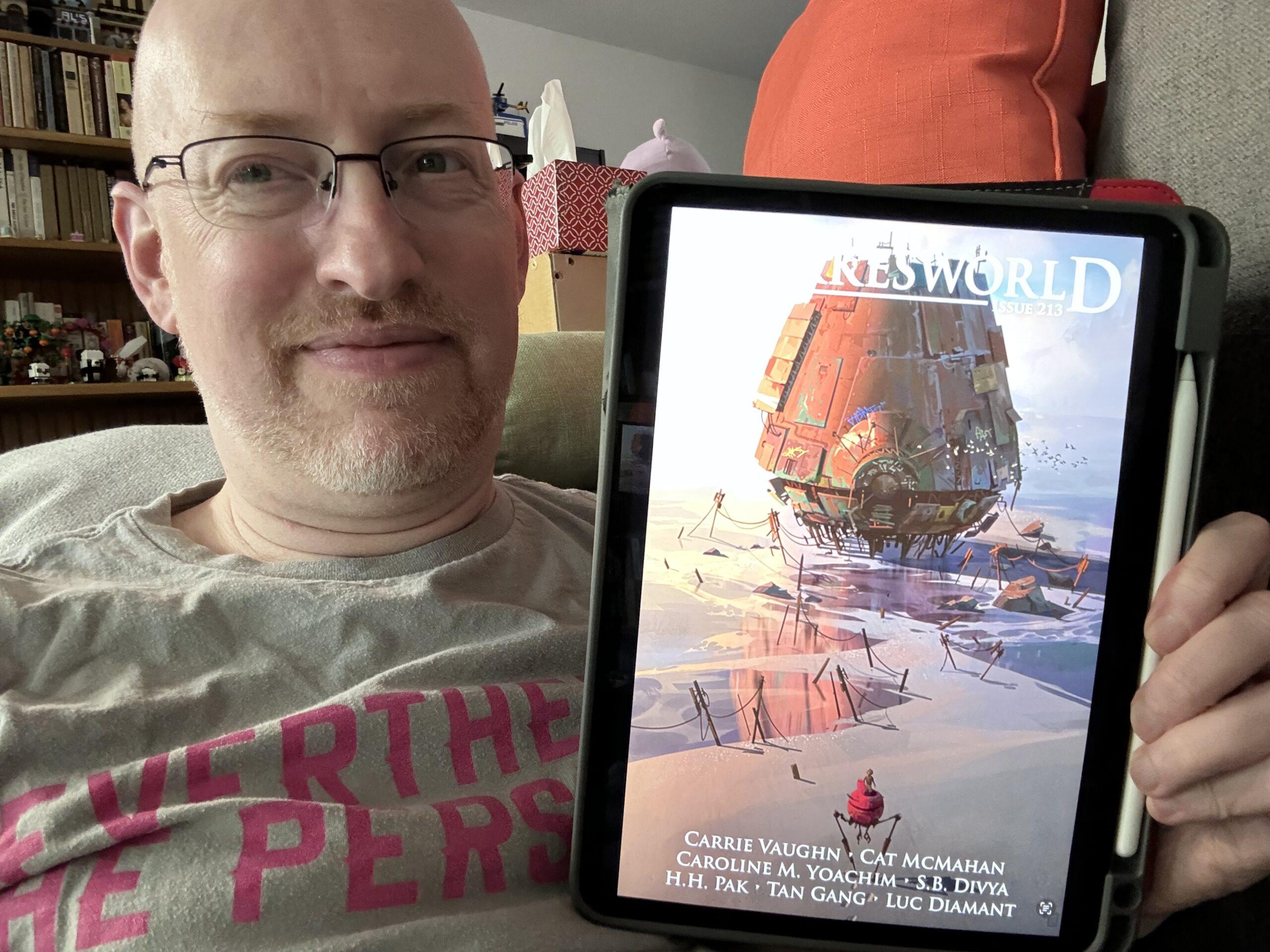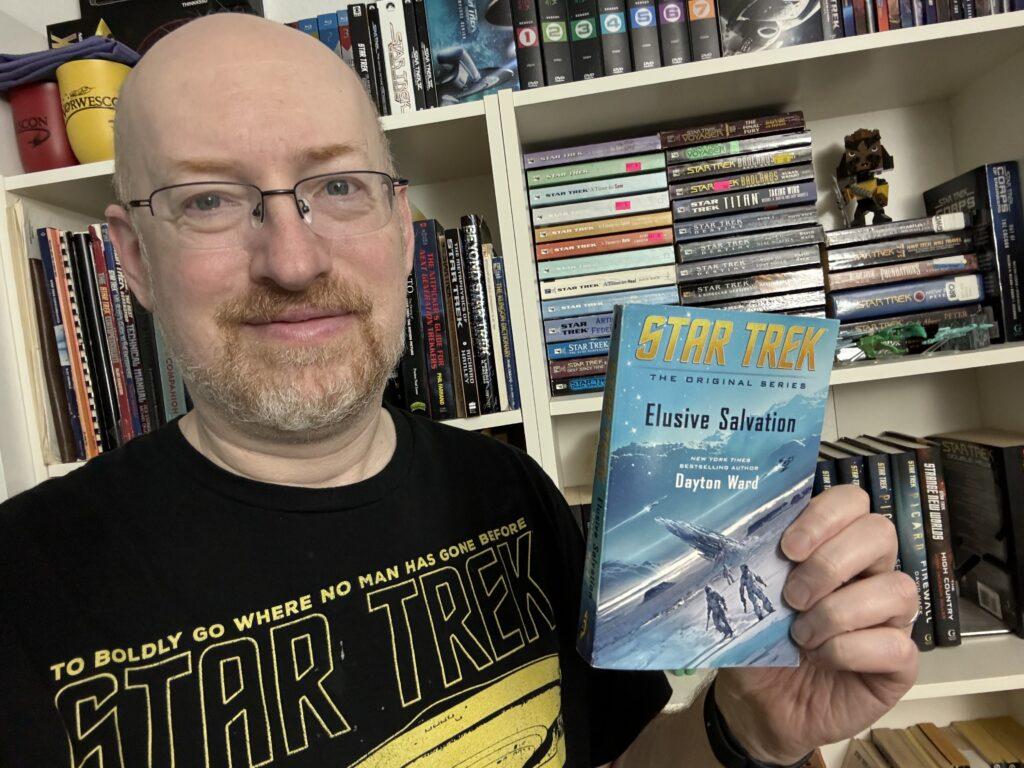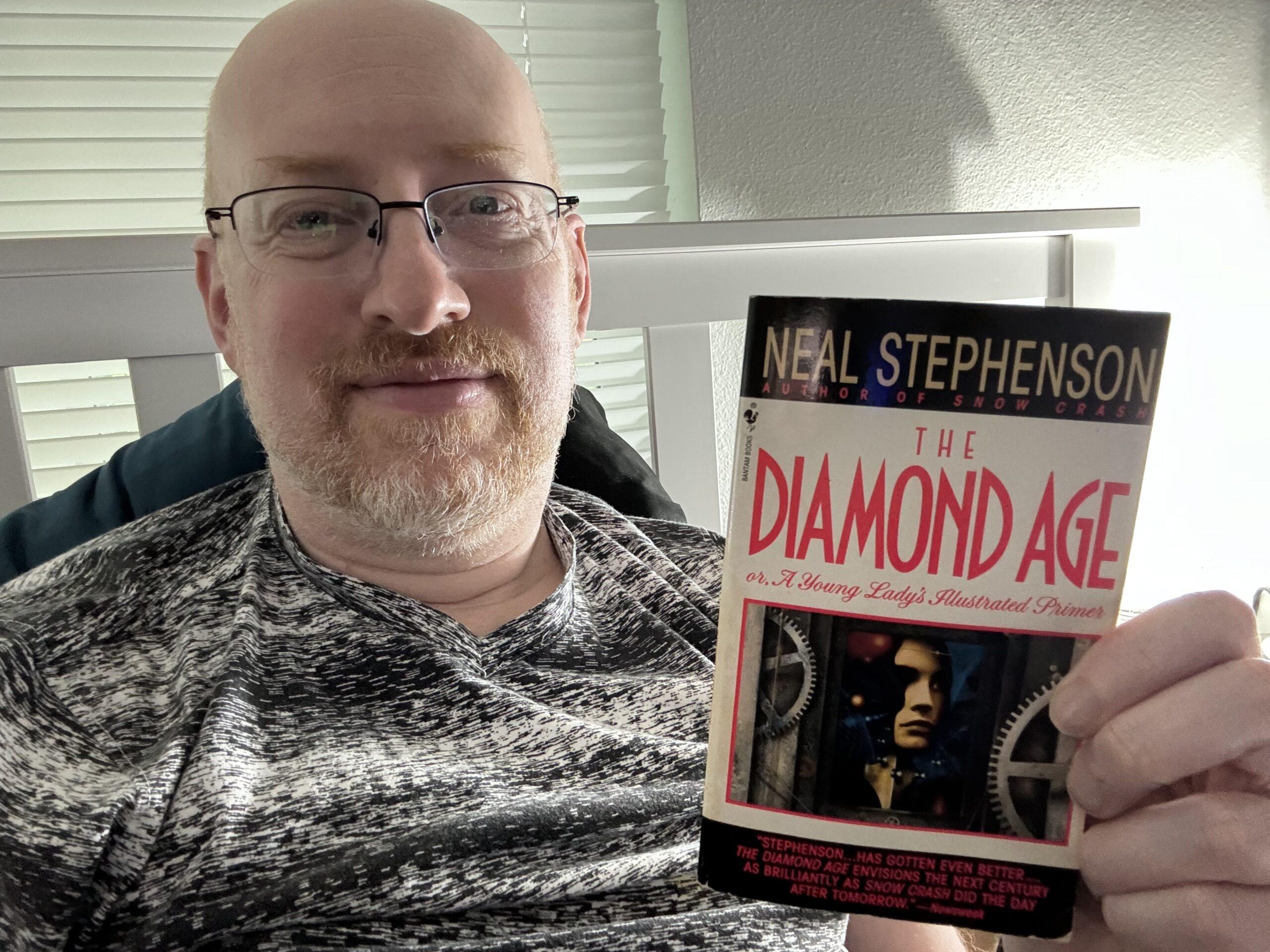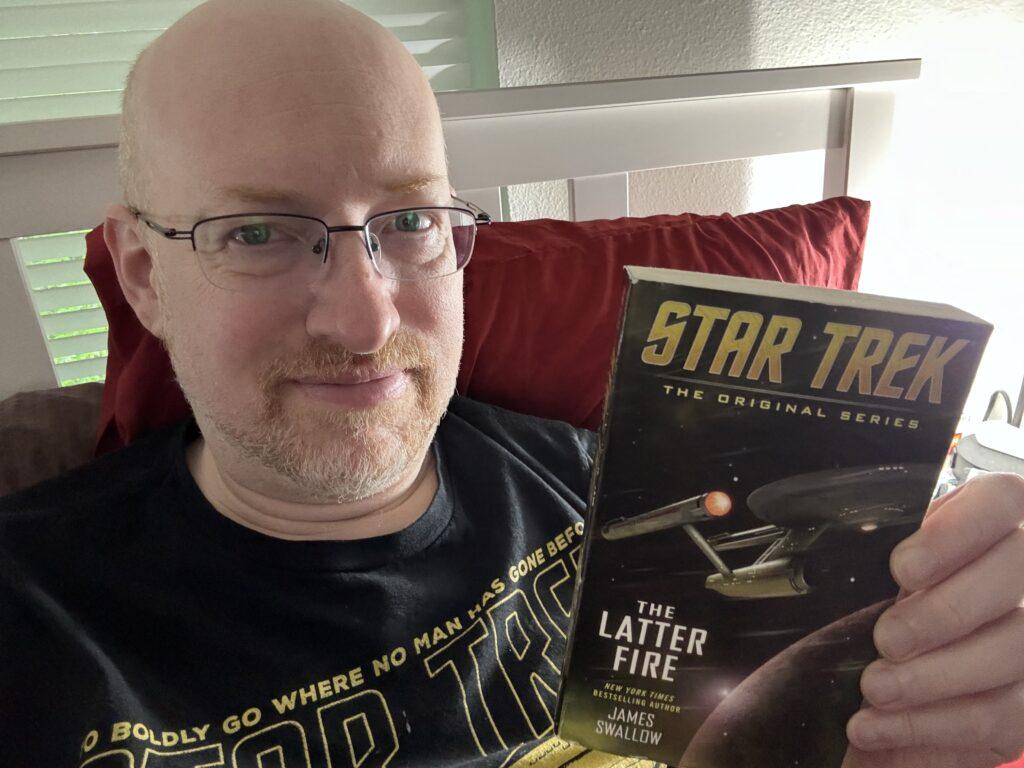42/2024 – ⭐️⭐️⭐️
Favorites this month were “Artistic Encounters of a Monumental Nature” by S.B. Divya, “Himalia” by Carrie Vaughn, and “Off Track” by Luc Diamant.

Enthusiastically Ambiverted Hopepunk
42/2024 – ⭐️⭐️⭐️
Favorites this month were “Artistic Encounters of a Monumental Nature” by S.B. Divya, “Himalia” by Carrie Vaughn, and “Off Track” by Luc Diamant.

It took longer than planned (as many projects often do), but I finally completed processing my photos from our vacation last summer.
If you’d like to spend a little time browsing through someone else’s vacation photos, there are four albums up on my Flickr account:
Part one: From Seattle to New York City by cross-country Amtrak.
Part two: Two days in New York City.
Part three: New York City to London by transatlantic cruise on the Queen Mary II.
Part four: Four days in London, and then flying home.
Okay, now that Discovery is done, I have some questions for the technobabble Trek geeks out there.
Brief background: The plausible tech is a large part of what has always drawn me to Trek. I’m the kid who was buying blueprints and memorizing technical manuals.
And I have to admit, this is one of the areas where Discovery has been a little shaky for me, particularly in the final three seasons after the jump to the far future.
I get that it was a jump from already futuristic tech to really futuristic tech, and it wouldn’t have been very interesting if everything just worked essentially the same way. But so much of it just ends up toeing or actually crossing the line from science fiction to Star Wars-style space fantasy magic that it kept bugging me.
So what I’m hoping for is some good old-fashioned technobabble “but make it plausible” speculation on some of the new tech.
(Yes, from a real-world storytelling perspective, tap-and-poof is much simpler than constantly having to say “beam me to [here]”; it’s basically the same reason nobody in films or TV says “goodbye” at the end of a phone conversation, and instead both parties just know when they’re done and hang up. But it bothers me!)
What’s the rationale/advantage to ships that consist of multiple pieces floating near each other, presumably held together with force fields? I can see the idea as an extension of Voyager’s nacelle reconfiguration (which, to be honest, I don’t remember if that was ever explained officially or unofficially; did that change the warp bubble shape or something for greater efficiency?). But I’m unsure if the practicality, especially when it comes to critical pieces of the ship like, oh, the engines. Not only is there now no easy way to physically get to those sections of the ship through Jefferies tubes for maintenance or emergency repairs (though tap-and-poof I suppose accounts for that…as long as you’re not having any problems with the transporters, at least, and we all know how reliable they are), but how does the warp propulsion system even work with disconnected nacelles? Since pre- and post-Burn warp technology still used dilithium crystals, I assume the basics are still more or less the same (matter/antimatter streams combined within the dilithium crystal to create the power stream that’s split and sent to the engines to create the warp field bubble, with actual propulsion through both warp and normal space handled by the impulse engine), so how does the post-dilithium power stream get to nacelles that are physically disconnected from the ship?
There may be other bits, but those are the two that have really stood out to me. They just feel too much like the writers/producers saying “if we do this it’s neat and futuristic and cool” without putting much thought into any in-universe rationale. It moves Star Trek from science fiction to space fantasy, and that’s just not quite as interesting for me…but I also believe that we’re a big ol’ bunch’a nerds who have spent decades proving that we can retcon and explain anything if we really want to, so I’m sure these are no exceptions. :)
41/2024 – ⭐️⭐️⭐️⭐️
Backman is incredibly good at being simultaneously heartfelt and serious and hilariously silly. This story of several people caught in a hostage situation after a bank robbery goes awry is really touching and often had me laughing out loud (something that has been common with all of Backman’s books that I’ve read). Definitely recommended. (And see? I do occasionally read something that isn’t sci-fi!)

40/2024 – ⭐️⭐️⭐️⭐️
A fun standalone-but-sequel-of-sorts to Ward’s earlier From History’s Shadow, with time travel, Gary Seven and Roberta Lincoln, and lots of fun nods to Trek timeline shenanigans, both canon and literary, including Greg Cox’s Rise and Fall of Khan Noonian Singh books. Kirk just can’t keep away from the 20th century….

Just replaced my computer’s old Logitech Z323 2.1 (stereo plus subwoofer) computer speaker setup with a small stereo amp and two small bookshelf speakers, and even just half an hour in, with hours to go before the amp and speakers are really performing at their best, it’s already a noticeably better sound. Fuller and more well-rounded, and as a bonus, not having a subwoofer sitting on the floor of my office means I won’t bother my wife downstairs nearly as much. Well worth it!
39/2024 – ⭐️⭐️⭐️⭐️⭐️ 1996 Hugo Best Novel
As good as every other time I’ve read it, and I think it’s still my favorite of Stephenson’s novels. “Modern Victorians with ubiquitous nanotechnology create a fancy children’s book” might not sound like that fascinating of a concept, but it definitely is. In addition to the oft-mentioned things about Stephenson’s writing that always work for me but don’t work at all for others — the snark, digressions, and sidetracks — it’s his ability to convey highly technical concepts in understandable form, which is highlighted here in some of the stories that the Primer tells, that has always been a big part of the appeal of this book for me.

The Abyss (1989): ⭐️⭐️⭐️⭐️⭐️
Finally got around to watching the new 4K release of The Abyss (the Special Edition cut, of course). Happily, it still holds up, and remains solidly in my list of favorite films. Even though I’ve seen it many times, know the story, and can quote quite a bit of it, I still found myself getting pulled in. The characters are fun, the claustrophobic tension is great, and the expanded details and characterization make the special edition well worth the extra time. And, of course, finally being able to have a high-quality copy is a real treat.
Long-time favorite quotes:
Hippy: “I got to tell you, I give this whole thing a sphincter-factor of about 9.5.”
Lindsey: “So raise your hand if you think that was a Russian water-tentacle.”
Lindsey (again): “We all see what we want to see. Coffey looks and he sees Russians. He sees hate and fear. You have to look with better eyes than that.”
Dune Part: Two (2024): ⭐️⭐️⭐️⭐️
Absolutely gorgeous, from start to finish, landscapes and production design both. I do kind of wonder if the Harkonnen designs were intentional homages to Giger’s work on the designs for Jodorowski’s aborted attempt. At some point I’ll want to find time to watch both parts back to back (maybe after Messiah comes out I’ll make it a trilogy marathon).
38/2024 – ⭐️⭐️⭐️⭐️
While following up on a relatively newly encountered alien race, the Enterprise finds itself dealing with a much larger issue than expected. A somewhat predictable primary antagonist, but balanced with a very interesting major threat to all parties.
